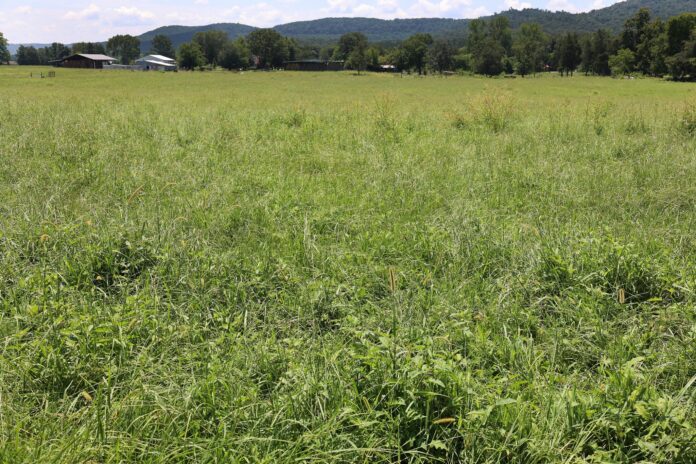AUBURN UNIVERSITY, Ala.—As springtime approaches, so do those pesky weeds that keep pastures from producing at the highest level. David Russell, an Alabama Cooperative Extension System weed specialist, said management of spring forages and weed control is an important task that most farmers undertake on a yearly basis. That means many farmers spend months planting and preparing their pastures and hay fields to produce as much good grass as possible.
Forages Are Essential
Of course, livestock must have grass to eat. Many essential nutrients are found in the forages that are grazed daily on farms. When weeds begin to affect the amount of nutrient-rich forages found in pastures, then the proper steps must be taken to remove them and keep them from being future problems as well. Integrated pest management (IPM) becomes essential in caring for hayfields and pastures when weeds impede on the productivity of pastureland.
“IPM is an ecosystem-based strategy that focuses on long term prevention of pest or their damage through a combination of techniques such as biological control, habitat manipulation, modification of cultural practices and the use of resistant varieties,” Russell said.
Four Parts of IPM
There are four parts to IPM: preventative measures, cultural techniques, mechanical techniques and chemical control.
Preventative measures keep weeds from growing with forages. This means using certified weed free seeds and cleaning farm equipment that may carry weeds or weed seeds.
Cultural techniques involve maintaining field conditions so that weeds are less likely to take root. Farmers must know about rotating crops, grazing management and soil fertility, and work to implement the techniques. This requires an awareness of forage and pasture conditions.
Mechanical techniques are the physical practices to destroy weeds and decrease germination. This includes tillage, mowing, hand pulling, hoeing and other physical removal practices. However, Russell said mechanical mowing has a fit, but it comes at a cost.
“Mowing may remove 75 – 400 pounds of grazable dry matter per acre,” Russell said. “Under optimal conditions the mower will have to be used at least twice, taking up more time.”
Chemical control includes the application of herbicides to weeds or soils to control germination and growth. In fact, there are several requirements to properly maintain spring forages with chemicals including proper weed identification, proper herbicide selection and equipment calibration.
Chemical Options
Alabama is home to many different weeds, including herbaceous broadleaves and bullrush. It can be difficult to remove desired weeds from forages with chemicals. Choosing the correct chemicals to use is important because choosing the wrong ones can cause damage to the forages as well. For this reason, it is important to know what the desired forage is. Alabama is home to several forage systems such as Bermudagrass, tall fescue, clover and many more. Identifying a desired forage helps to narrow down the correct herbicides to use.
There are many herbicide choices out there. It is best to seek professional help or to do proper research to determine what is the best fit for certain forages and situations. According to Russell, some herbicides that are useful and available are 2,4-D Amine, Rezilon, Weedmaster, GrazonNext HL and Prowl H2O. Choosing the correct herbicide is essential to have the best forage possible.




























